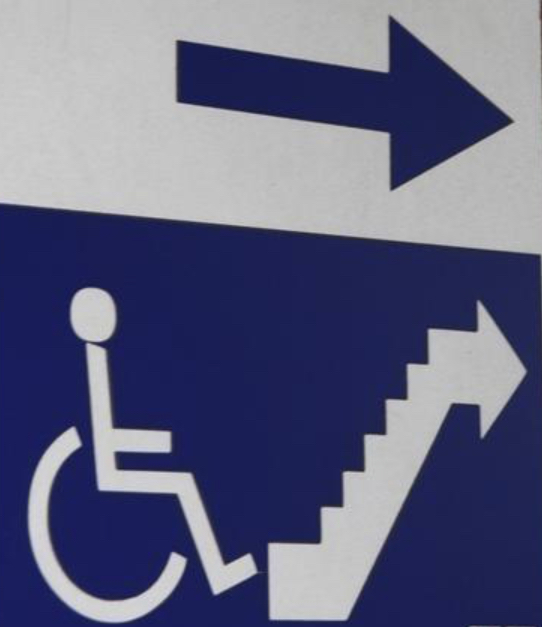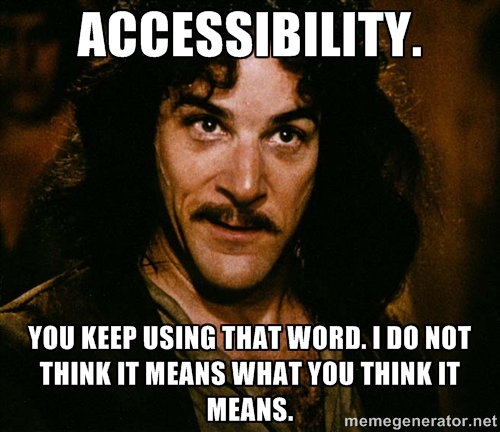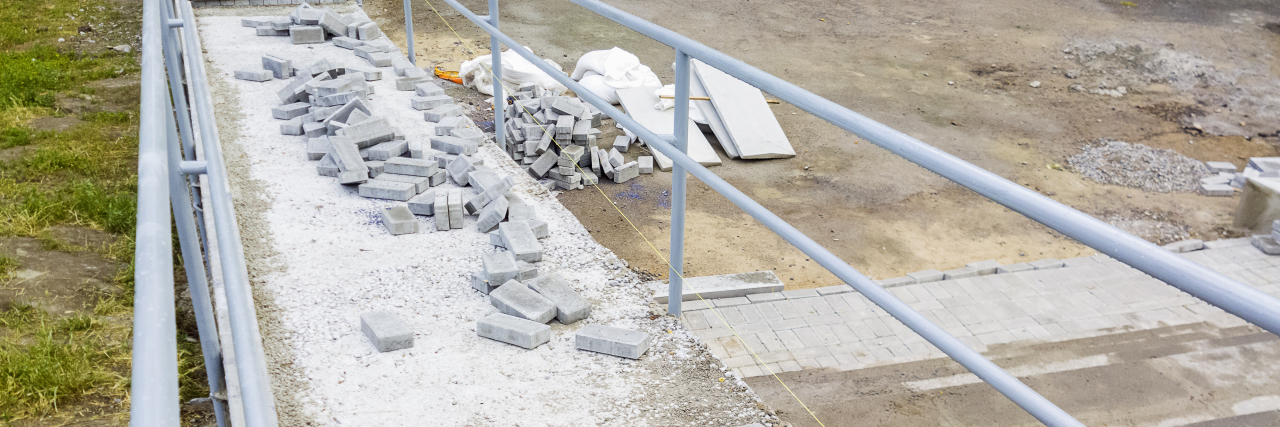When Does Accessible Actually Mean Accessible?
Our world was not created for those with disabilities. In recent years, vast improvements have been made, but realistically we as a society still have a long way to go.

The social model of disability proposes that it is our environment that makes us disabled, and when it comes to accessibility, I can’t help but agree. People with disabilities are faced with accessibility conundrums daily and they are often very unpredictable. I believe access to our environment could and should be made easier because not only are we faced with an aging population who will benefit from these adjustments too, but no one is guaranteed excellent health forever.
I understand for many people, it might be hard to grasp the challenges faced by those with disabilities, because they haven’t seen them firsthand or haven’t had any reason to consider such scenarios before. But how can we raise awareness of accessibility when the very lack of accessibility prevents us from getting out there and raising awareness in the first place? Similarly, when someone sees us struggling to contend with our environment, this could only feed into the harmful view that our difference means we are to be pitied or we are lesser.
I can only speak from the perspective of a wheelchair user, but consider these experiences I’ve had:
- Trying to use the accessible fire exit, but it has a step down to the ramp.
- Trying to negotiate the accessible bathroom packed with boxes, high chairs and tools.
- Trying to “fit in” as a new student but only being able to sit in the very front row of a lecture hall.
- Trying to dodge the sandwich boards on the pavement, cars parked on the curb cut or in the striped boxes of an accessible parking space.
- Trying to book an accessible hotel room, only to be told it can’t be guaranteed until check in. Or trying to book an accessible family room for that matter.
- Trying to go to the dentist but her dental chair doesn’t go low enough for me to transfer.
- Trying to find a standard sized table at a restaurant with high tables and booths.
- Trying to move around the many clothing rails on a shop floor, or trying to speed-dress because the accessible changing room is occupied by someone who isn’t a wheelchair user.
- Trying to get public transport when you know the accessible space might not be available, even with pre-booked assistance. Or when that space is occupied by a pram or a bike.
- Trying to go to a concert, but you have to wait until the accessible line opens and then you can only purchase a maximum of two tickets.
- Trying to hold onto your things while opening the door at the same time because there is no push button access or worse still, “only one step.”
- Trying to order a drink at the bar and shouting up to the barman to no avail. He can’t even see you, never mind hear you.
- Trying to reach that chocolate bar on the top shelf you’ve craved all day but it’s just too high up.
Does any of this sound familiar to you? I’m aware the above list might sound like a list of complaints, but this article is not meant to be like that at all. Instead, I just want to paint a picture of our daily realities when accessibility is poor.
These situations, while frustrating, are often undeniably funny as you wonder, “what were they thinking when they designed it this way?” or “what next?” (The interesting choice of foot-operated trash cans in accessible bathrooms, for instance.) But other times, sadly they make me feel useless and embarrassed. Don’t get me wrong, on many if not all of the above occasions, I have been able to rely on the kindness of a stranger to help me out. However, what if we didn’t have to? What if true accessibility was the norm? What if accessibility wasn’t something that was considered after the fact, but instead it was the starting point?

Current reasonable adjustments, while helpful, are often limited by financial constraints and tend to adopt a “one size fits all” approach. But what if you don’t fit the typical mold? I believe poor accessibility feeds isolation and dehumanization. True accessibility offers inclusion, dignity and respect. There’s no denying that getting accessibility “right” can make someone’s life extraordinarily better.
Picture a world filled with ramps, changing places toilets, audio guides, sign language visuals and ear defenders. It looks good, doesn’t it?
Getty image by Evgen Prozhyrko.

